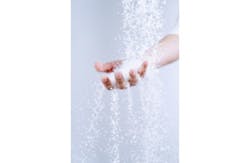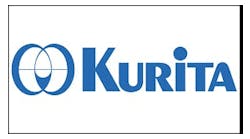Coming soon in the October issue of Water Technology, Jeff Franks writes about sodium chloride, NaCl, as well as potassium chloride, KCl. In this article, Franks begins by asking readers if they know just how much salt can fit in a cubic foot of resin and why this point of reference, with special regards to NaCl, is important for everyone in the field of water to know — especially for those in the water softener industry.
Franks explains that eight percent DVB gel cation resin contains a capacity between 1.9 and 2.0 meq/ml of resin as variation can occur during the manufacturing process; manufacturers will publish this range of resin in their spec sheets/technical specifications.
If these units were converted into grains per cu. ft., a cubic foot of eight percent DVB gel ion exchange resin for water softeners (when new) has 31,499 to 43,683 grains per cu. ft.; meaning if the ion exchange process was 100 percent effective during regeneration, clarifies Franks, 7.3 lbs./cu ft. of NaCl salt would completely regenerate the resin.
“The term stoichiometric is used to state that the theoretical maximum chemical exchange has occurred,” declares Franks, “So if we lived in a perfect world where perfect chemical exchanges could occur between a salt solution and ion exchange resin, then there would be absolutely no reason to regenerate a water softener above a salt dosage of 7.3 lbs./cu. ft.”
The future of softener systems
Although a water softener system with the capacity to produce 100 percent exchange of salt with resin does not exist, Franks hopes that in the future, designers will be able to create systems that operate at salt dosages of 7.3 lbs./cu. ft. — or better yet — below that benchmark, if more people in the softener industry fully understand this point of reference.
“Ideally, if all the new ion exchange softener systems installed were set up and designed to operate in the two or five lbs./cu. ft. salt dosage range, it would be a very good proactive first step,” says Franks. “In the long run, everyone will benefit because there will be less wasted salt and water, our sewer systems will have less chloride loading and our industry will improve its reputation.”
To learn more about salt in resin and why it is important be sure to check out Water Technology’s October issue.
You can find similar articles and news releases pertaining to water softening and conditioning here.


